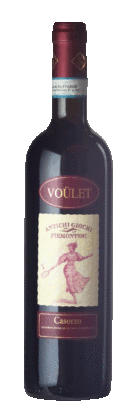1
/
of
1
Sulin Voulet Casorzo Red Malvasia - 2023 (750ml)
Sulin Voulet Casorzo Red Malvasia - 2023 (750ml)
Regular price
$14.99
Sale price
$14.99
Regular price
$14.99
Unit price
/
per
Winemaker's Notes:
Casorzo Doc, obtained from the native Malvasia di Casorzo vine, is a sweet dessert red wine. Slightly sparkling is a great combination with sweets, dried cakes, cream ice cream. Served always fresh, about 8-10 (degrees C), it is pleasant even outside of meals, especially if accompanied by pastries. Intense and particularly pleasant its characteristic scent reminiscent of the rose.
Availability:
15 In Stock
$25 Shipping on Orders +$299
Couldn't load pickup availability
Share :

- varietal
- Region
- Sub - Region
- Type
- Reviews
Malvasia is truly a family of many varietals. It generally produces a light red wine, almost pink in color. Common aroma notes associated with Malvasia include peaches, apricots and white currants. Red Malvasia wines are characterized by a richness and chocolate notes. Fortified Malvasia, such as Madeira, are noted for their intense smokey notes and sharp acidity. As Malvasia ages, the wines tend to take on more nutty aromas and flavors though many Malvasia have a short life span of only a few years after vintage.
Located in north east Italy, Veneto is one of Italy’s major wine regions. Pinot Grigio and Gargenega are the two most popular white varieties and account for most of the region's still wine. Meanwhile, Prosecco, made in the hills of Conegliano, is responsible for the country’s most popular sparkling wine. Tucked away in the foothills of the Lessini Moutains north of Verona, Valpolicella and Amarone della Valpolicella are responsible for making some of the country’s most famous fine wine.
NULL
Red wine is wine made from dark-coloured grape varieties. The color of red differs based on the grapes variety or varieties used.Interestingly, black grapes yield a juice that is greenish-white. The actual red color comes from anthocyan pigments (also called anthocyanins) from the skin of the grape (exceptions are the relatively uncommon teinturier varieties, which produce a red colored juice). Most of the production centers around the extraction of color and flavor from the grape skin.


